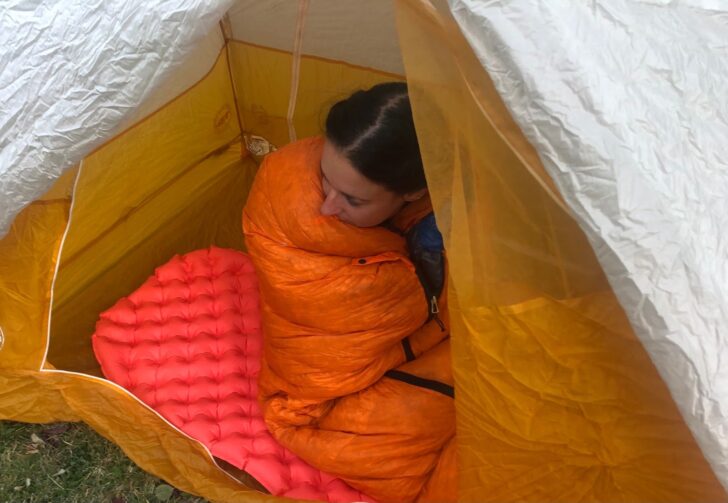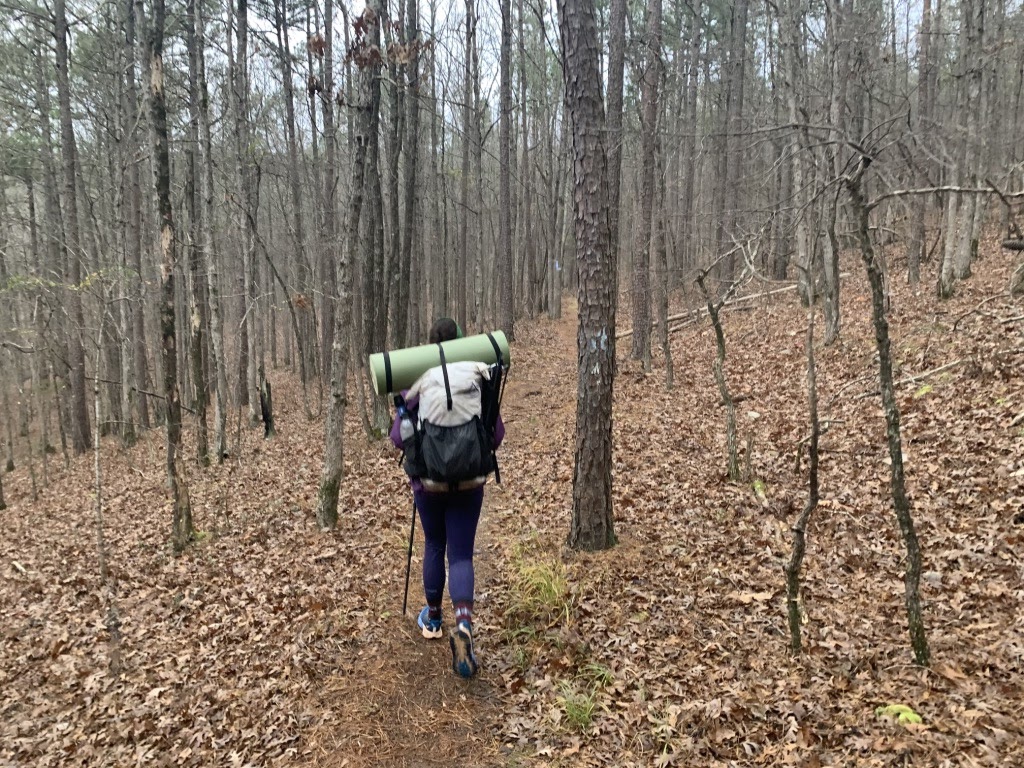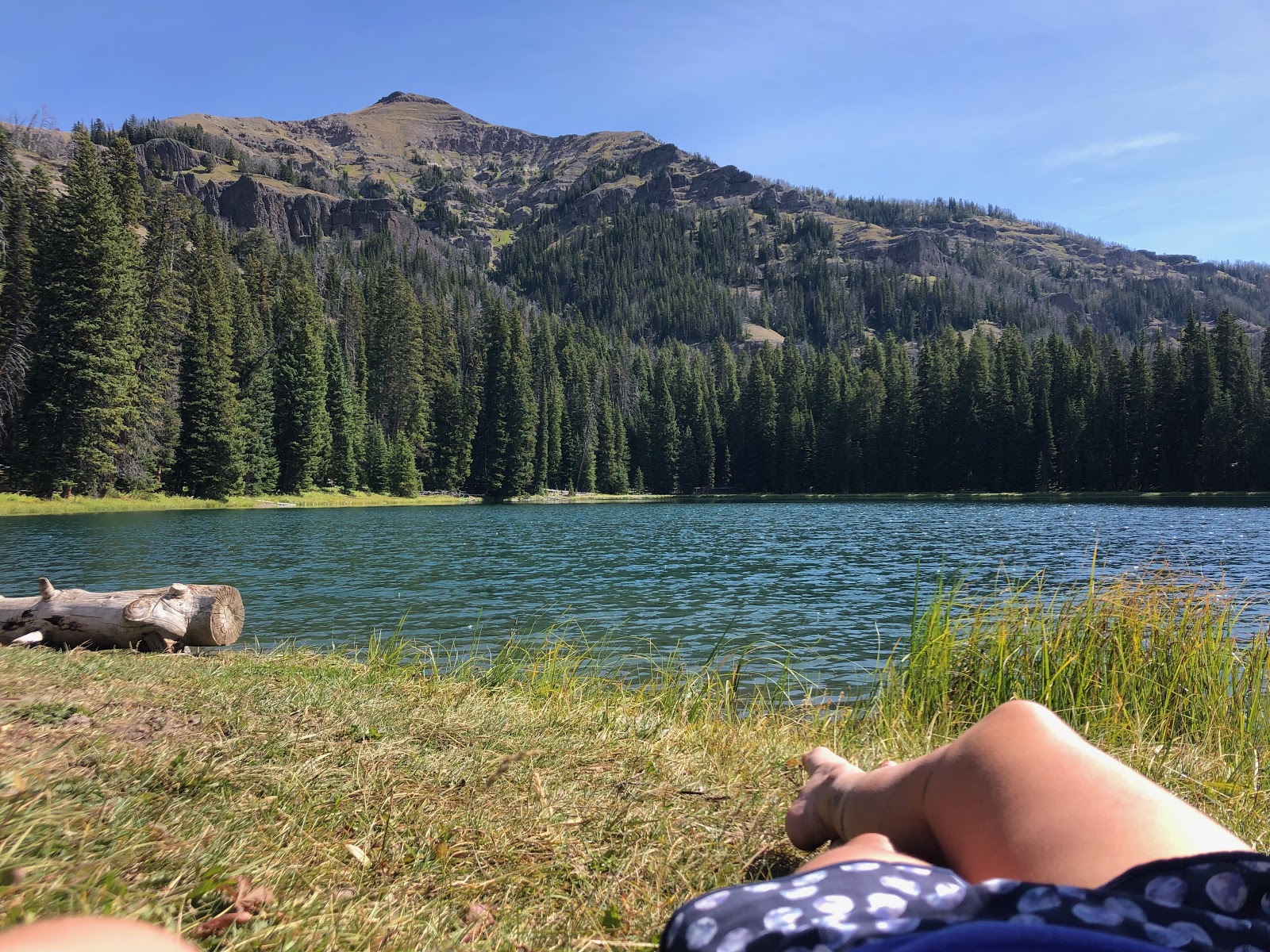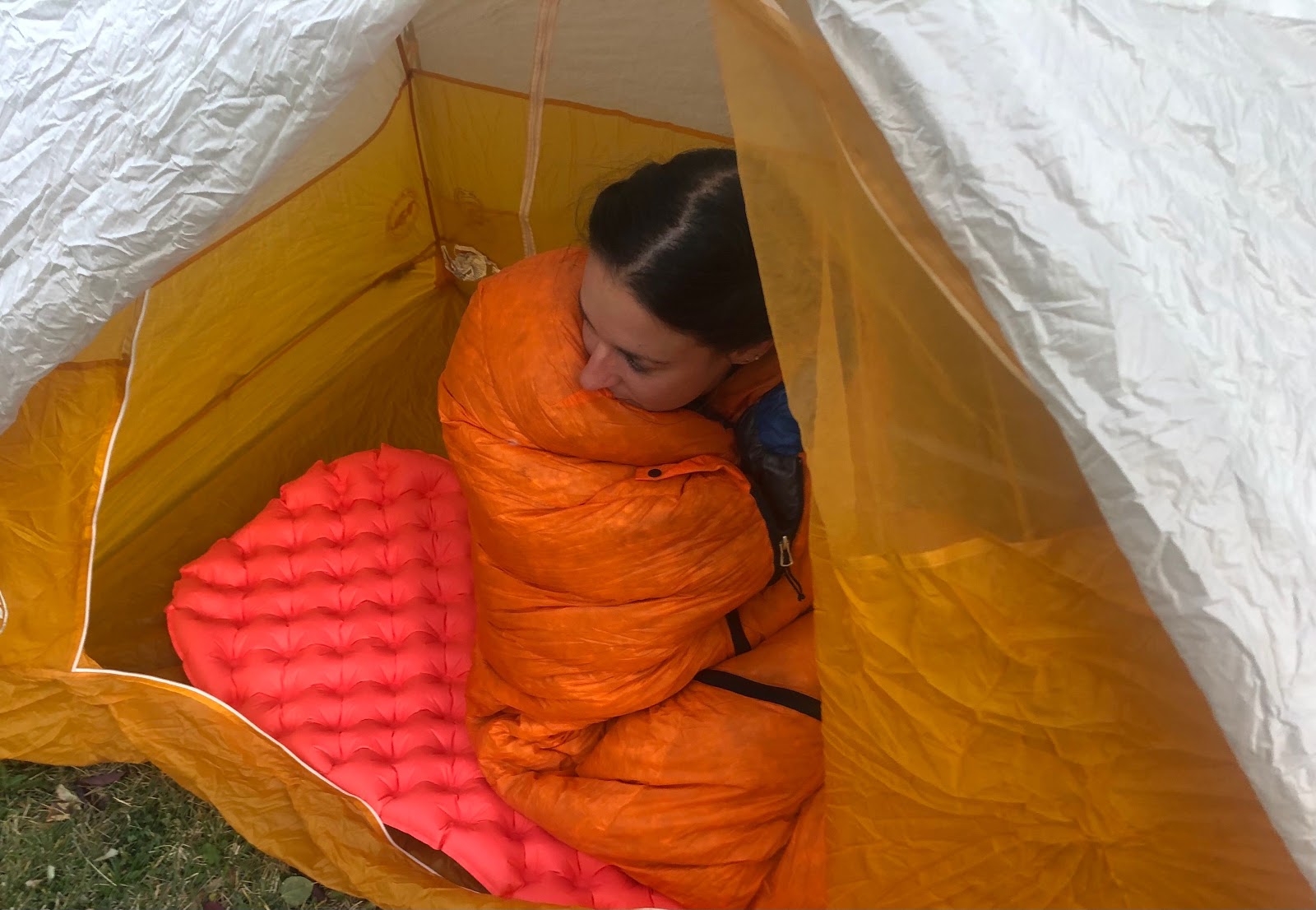Confession time. As a longtime writer in the outdoor industry, I’ve had plenty of opportunities to lower my base weight to a ridiculously low number. If I wanted to, I could be a walking advertisement, the kind of person you see on the trail and know that Everything in Her Pack is DCF Including Her Pack. But I’m not, and I’ve had more than one trip with other ultralight backpackers where I felt clunky, goofy, and like I had to explain myself.
We get to camp, and they unfurl their translucent DCF tarps, slap their closed-cell foam pads on the ground, and shake out a feather-light quilt from their hip-belt-free 30L pack.
I drop my 55L pack (with an extra shoulder pocket!) with a thud and start extricating my two-person from the depths of the pack. I nearly pass out from the infinity breaths it takes to inflate my sleeping pad, and then shake out a 10-degree mummy bag so lofty I have to wrestle it into the tent. To the amusement of my ultralight companions, I whip out a camping pillow and inflate it to *just the right amount.* My campsite is now set up.
None of my gear is ridiculously heavy, but it’s also not trendy, and very little of it is lightest in its class. I’ve tried quilts (I sleep too cold), trekking pole tents (I find them a pain to set up), and closed-cell foam pads (ask me how that went). I’ve always gone back to the items that aren’t the newest, lightest, or coolest, but for me, they’re the most comfortable and functional, and I’m willing to carry a heavier pack to have a better experience each night. Here’s the gear I always carry and what the cooler options would be.
Big Three
Shelter
What I Use: Big Agnes Tiger Wall UL 2
What’s Cooler: One-person DCF tarp or trekking-pole-supported shelter single-wall shelter

Yes, I am one person, and yes, I carry a two-person freestanding tent. (or semi-freestanding, depending on how you describe this shelter). I love how easy it is to set up, how taut the pitch is with very little effort, how spacious the interior and dual vestibules are, and how well double-wall shelters handle condensation. I also use this with my partner, but I don’t think twice about carrying it on solo trips as well. This shelter weighs 2.5 pounds, which isn’t excessive in the grand scheme of things considering how well it accomplishes what I need it to.
Sleeping Bag
What I Use: Feathered Friends Petrel UL 10
What’s Cooler: Ultralight 30-degree quilt

I’ve tried the quilt life, and it didn’t work for me. I know there has been plenty written about how quilts are just as warm as mummy bags, but this isn’t the case for me. Having full coverage plus a hood isn’t comparable to the drafts I’ve experienced with a quilt. This sleeping bag is quite bulky, but I’ve never been cold in it, and the draft collar and treated down offers incredible protection.
Pack
What I Use: Hyperlite Mountain Gear 3400 Southwest
What’s Cooler: 30L pack with no hip belt or frame
This pack is made with DCF, and it’s also pretty pricey, but it has the capacity I need for carrying extra food, plus my gear to be comfortable at camp. I can fit my gear into a 45L if I’m going out for a few days, but an extended backpacking trip or thru-hike means I need at least 50 or 55 liters of capacity.
Extras:
Sleeping Pad
What I Use: Therm-a-Rest NeoAir XLite
What’s Cooler: Z-fold closed-cell foam pad or cut-down torso-length back pad
The lightest of ultralight hikers use the back pad from their ultralight pack. I like to be able to sleep on my side and not care if there’s a rock or a root underneath my tent. This sleeping pad takes a lot of effort to blow up, and I may or may not have destroyed two of them this year on a cactus and a pair of tweezers (don’t ask), but I will forever remain loyal to the two inches of padding and 4.2 R-value.


What I Use: Wal-Mart Flip-Flops for camp shoes
What’s Cooler: not having camp shoes
These cost $4.99 and weigh 4 ounces. I’m never leaving them behind. The option to not slide into my crusty, stinky, probably wet shoes for a midnight bathroom break is way too appealing. I know the judgment that hikers get from Crocs or flip-flops dangling from the outside of a pack, but I shall choose to ignore it.
What I Use: Sea to Summit Aeros Ultralight Pillow
What’s Cooler: rolled up fleece in a stuff sack
I know shockingly few hikers who use one of these ultralight pillows. Everyone else seems fine with balling up a greasy down jacket or shoving extra clothes into a stuff sack. That’s too lumpy for me. This weighs 2 oz (57 g) and inflates with four breaths. For me, it’s a no brainer.
What I Use: Tracksmith Harrier Long Sleeve and Isobaa Merino Tights for Camp Clothes
What’s Cooler: Not having camp clothes
I carry camp clothes, tucked away in the bottom of my pack. I might not use them for the first few nights on a backpacking trip, but once my hiking clothes get wet or rancid, you better believe I’m giddily donning my clean(ish), dry base layers to sleep in as soon as I get to camp.
Comfort, Safety, Enjoyment
Chances are, there’s something in your pack that isn’t the lightest (or even most effective) piece of gear possible, but it hits your budget and meets your needs. Maybe it’s just a sentimental item or something you can’t bring yourself to leave behind? Drop us a line in the comments and let us know!
Related Content
Essays
- What is ultralight backpacking? We hinted at it here, but this more comprehensive essay by Ryan Jordan will give you even more food for thought.
Columns
- Maggie writes BPL’s Learning Curve column. Check out her most recent piece!
Gear
- Are you a pillow user? Ryan Jordan wrote BPL’s Ultralight Inflatable Pillows Gear Guide. He had a lot of good things to say about Maggie’s choice of a Sea to Summit pillow.
DISCLOSURE (Updated April 9, 2024)
- Backpacking Light does not accept compensation or donated/discounted products in exchange for product mentions or placements in editorial coverage. Some (but not all) of the links in this review may be affiliate links. If you click on one of these links and visit one of our affiliate partners (usually a retailer site), and subsequently place an order with that retailer, we receive a commission on your entire order, which varies between 3% and 15% of the purchase price. Affiliate commissions represent less than 15% of Backpacking Light's gross revenue. More than 70% of our revenue comes from Membership Fees. So if you'd really like to support our work, don't buy gear you don't need - support our consumer advocacy work and become a Member instead. Learn more about affiliate commissions, influencer marketing, and our consumer advocacy work by reading our article Stop wasting money on gear.




Home › Forums › A Gear Confession